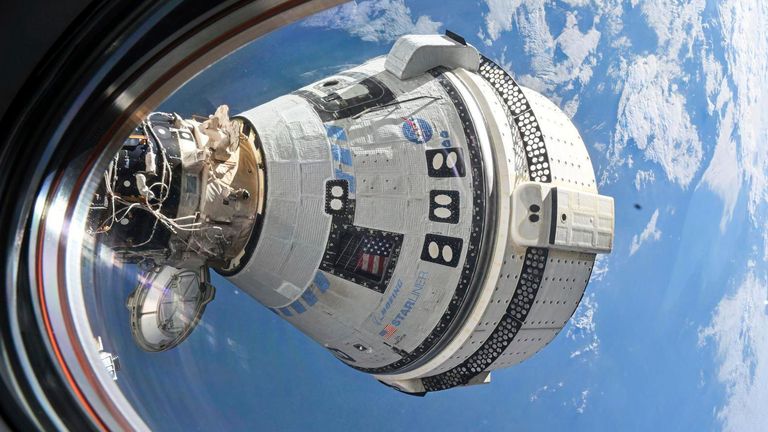NASA has announced the two astronauts stranded on the International Space Station (ISS) will return to Earth on SpaceX in February 2025.
Pilot Sunita “Suni” Williams and Commander Barry “Butch” Wilmore blasted off in Boeing’s new spacecraft on 5 June, and were meant to stay in orbit for eight days after docking on the ISS.
However, problems with the Starliner’s propulsion system mean the NASA astronauts’ return to Earth has been repeatedly delayed. They’ve now been there for more than two months.
NASA administrator Bill Nelson said at a press conference on Saturday a manned return on Starliner would be too dangerous, and the two astronauts are safest staying on the space station.
“Spaceflight is risky,” he said. “Even at its safest, and even at its most routine. A test flight by nature is neither safe nor routine.”
Associate administrator Jim Free then added: “The uncertainty in our [technological] margins is what drove our decision.”
Starliner will now undock in early September and attempt to return on autopilot. The two astronauts are set to return in February on a SpaceX Crew Dragon spacecraft which is due to launch next month as part of a routine astronaut rotation mission.
Ms Williams and Mr Wilmore both support the plan “fully,” and the SpaceX crew will make the necessary adjustments.
Many of Starliner’s thrusters in the propulsion system overheated when fired and leaks of helium, used to pressurise the thrusters, appear to be connected to how frequently they are used, NASA’s commercial crew manager Steve Stich previously explained.
Speaking at the press conference on Saturday, Mr Stitch said: “The bottom line relative to bringing Starliner back is there was just too much uncertainty in the prediction of the thrusters.
“If we had a model – if we had a way to accurately predict what the thrusters would do for the undock and all the way through the deorbit burn and through the separation sequence, I think we would have taken a different course of action.
“But when we looked at the data and looked at the potential for thruster failures with a crew on board… it was just too much risk for the crew.“
This breaking news story is being updated and more details will be published shortly.
Please refresh the page for the fullest version.
You can receive Breaking News alerts on a smartphone or tablet via the Sky News App. You can also follow @SkyNews on X or subscribe to our YouTube channel to keep up with the latest news.

